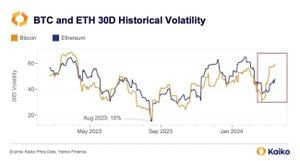Researchers have made groundbreaking advancements in the study of 2D ferroelectric materials, particularly focusing on the semiconductor NbOI2, which has shown unprecedented coupling between electronic transitions and ferroelectric ordering. This novel finding opens new avenues for enhancing semiconductor technology and could play a pivotal role in future optoelectronic device design.
Historically, the interaction between charge carriers and lattice vibrations—or phonons—has been extensively studied. Conventional polar semiconductors typically exhibit dynamics dominated by longitudinal optical (LO) phonons. A contrasting interaction takes place with transverse optical (TO) phonons, usually characterized by negligible contributions due to the lack of macroscopic polarization. Yet, ferroelectric materials like NbOI2 display intriguing behaviors, where the TO phonon modes govern their phase transitions and enable unique interactions.
The research team, comprised of experts across multiple institutions, set out to establish direct evidence for charge coupling with phonon modes. Through the use of terahertz time-domain spectroscopy and first-principles calculations, they demonstrated how the photogenerated coherent phonon interacts strongly with electron transitions above the bandgap of NbOI2.
The optical bandgap is particularly important as it relates to the material's ability to conduct electricity and interact with light. During their experiments, the researchers identified the TO phonon mode at roughly 3.1 THz as the fundamental coupling mechanism driving electronic transitions. The resulting data highlighted this interaction's specificity—only the phonon corresponding to ferroelectric order exhibited coupling with electrons excited above the bandgap.
"The soft TO phonon mode is the only phonon mode coupling to the electronic transition, exhibiting unique characteristics among ferroelectric semiconductors," remarked the authors of the study. The authors emphasized the outcome's practical significance: it alters our previous understandings of charge dynamics in semiconductor devices, especially those intending to capitalize on defect tolerance.
Before concluding, the study provided insights connecting this new form of charge coupling to enhanced defect tolerance observed in certain materials. Such characteristics are believed to make NbOI2 and similar materials promising candidates for next-generation optoelectronic applications.
Overall, the team's accomplishments introduce groundbreaking ways to explore electronic properties related to ferroelectric ordering. The relative coupling of charge carriers to specific phonons indicates efficient screening of the Coulomb potential and varied dynamics depending on electronic excitation levels.
Looking forward, the authors speculate, "This coupling could serve as a guiding principle for future discoveries of defect-tolerant materials for optoelectronic applications." They conclude by advocating for continued research aimed at unraveling the complex web of interactions within these novel 2D materials.



